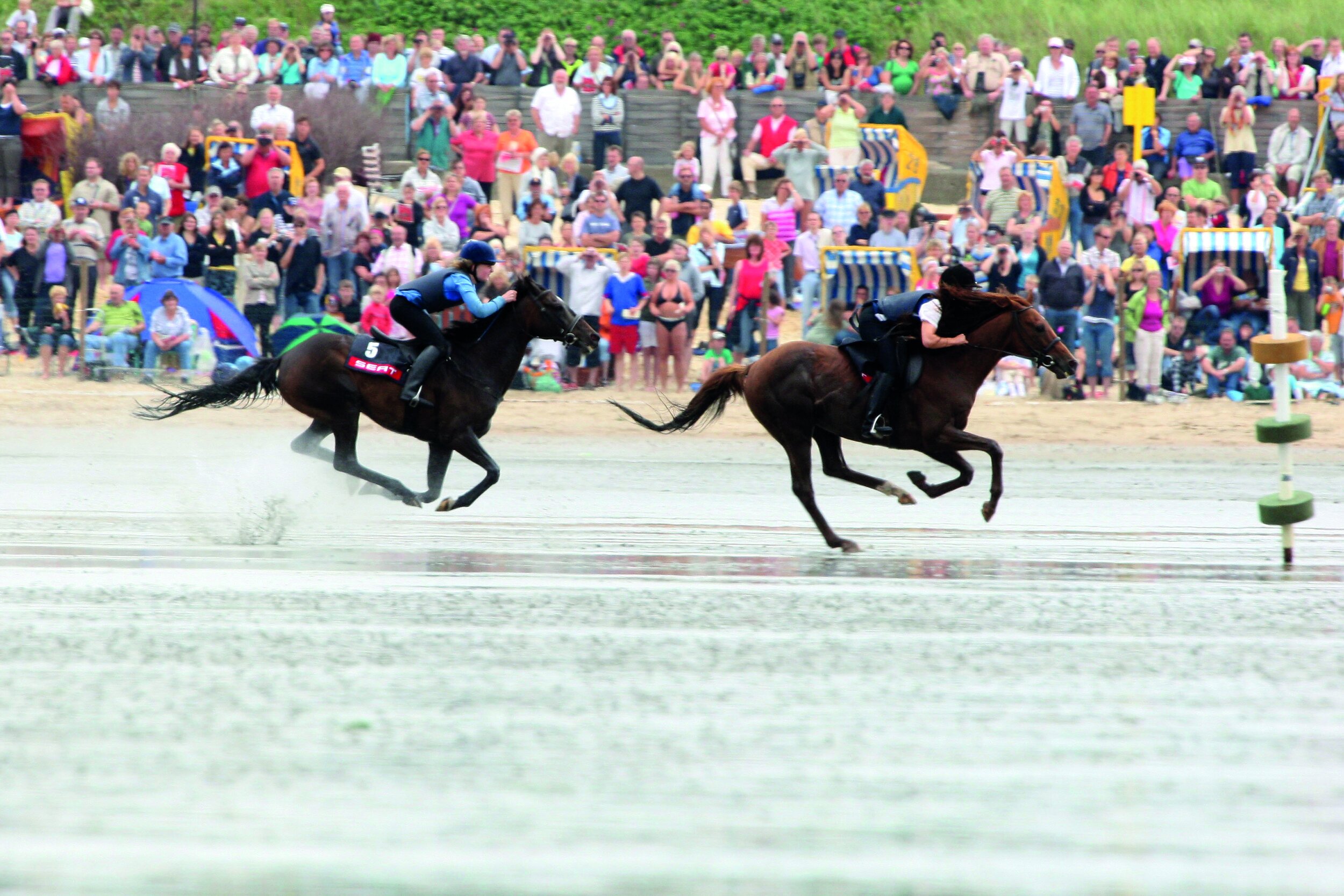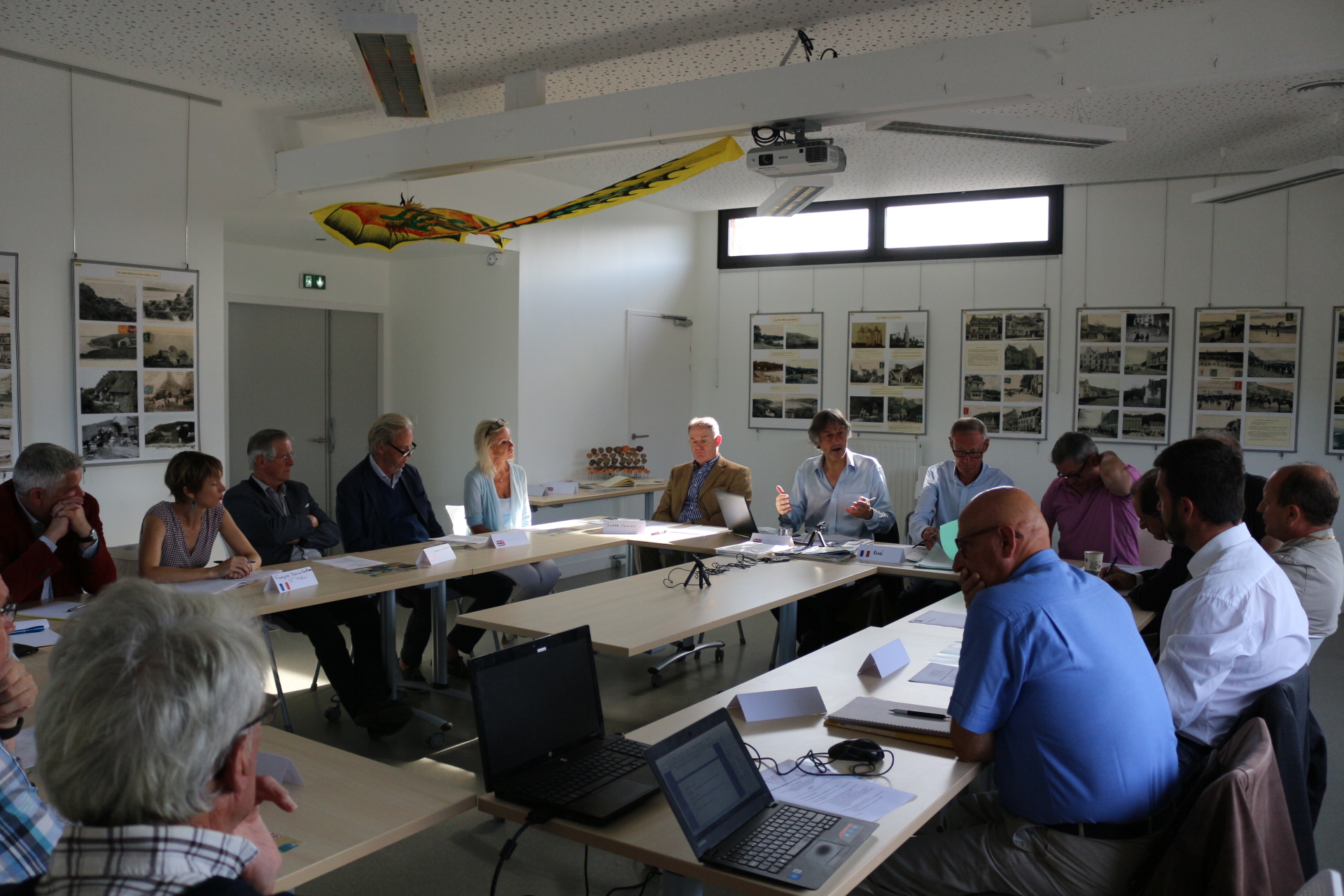New Spanish beach race festival unveiled at meeting in Germany
Article by Paull Khan
There will be a spanking new venue for official beach racing in Spain this year when the Andalucian village of Zahara de los Atunes opens its doors to thoroughbred racing on Saturday October 29th, the middle day of an attraction-packed three-day beach festival, bookended by jazz concerts and polo. Long known for its beach-bar music scene, horseracing will now be used in Zahara in an attempt to prolong the tourist season in this southernmost part of Spain until the end of October.
The Costa de la Luz now boasts two beach tracks, with the venerable Sanlucar de Barrameda an hour-and-a-half drive up the coast.
Zahara’s stunning straight beach will accommodate races between 1400m/7f and 1800m/9f.
Plans for the Zahara festival were unveiled at this year’s annual meeting of the European Beach Racing Association, which took place in Cuxhaven, on Germany’s north seacoast. Delegates had been privileged to witness the famed Duhner-Wattrennen races, which have been staged on the vast beach for the past 120 years. An attentive and happy-paying crowd of 13,000 attended this year’s renewal, despite poor weather. The programme was varied, with trotting (mounted and sulky) and gallop races for warmbloods in addition to thoroughbred racing.
Cuxhaven is unique among beach racetracks in that the horses race through a shallow covering of standing water. The resultant spray, from the horses’ hooves and the wheels of the patrol vehicle, creates its own spectacle. The races are recognised as a powerful tourist attraction—a national minister attended and addressed the launch party before proceedings began.
EMHF - Our concern for horse welfare takes a myriad of forms
Paull Khan - News from the EMHF
Published in European Trainer - October - December 2017, issue 59
Click here to order this back issue!
In the wake of the now infamous incident in which jockey Davy Russell was seen to strike his horse on the head prior to the start of a race, the marked difference between the media reaction in Ireland (more forgiving) and that in Britain (more damning) was commented upon.
Just one example of the wide variation, as between European countries, in public opinion on horse welfare, and animal welfare more widely. In some regions, the ‘volume level’ of discussion of such matters is turned up high; not so in others.
In a sport with no global Rules Book, it would be strange if these cultural differences were not reflected to some extent in the practices and regulations of individual Racing Authorities. And sure enough, they are. Indeed, what a country’s Rules of Racing says about its culture would make for a fascinating study. One could make a crude start by marking up, on a map of Europe, the number of whip strikes allowed in a race by the various countries. Very broadly, it would resemble a climatic map of the continent, with higher numbers accepted in the hotter south, reducing as one travels north until reaching the point of zero tolerance in Norway.
Skim through the Rules Book in any of our countries and you will find a plethora which promote the welfare of our racehorses. In many cases, that aim is indeed their sole purpose. These Rules and procedures fall into many categories – from the horse-care component of the course which a trainer must pass in order to be granted a licence, to the requirement for a minimum number of vet’s to be present before a race meeting can take place, to enforced stand-down periods following the administration of certain veterinary interventions, to the mandatory abandonment of jump racing when the ground is designated ‘Hard’ – the list goes on and on.
To read more of this article - subscribe now!
EMHF - Welfare at the top of the agenda
First published in European Trainer issue 58 - July - September 2017
Click here to order this back issue!
There is debate over the appropriateness of the use, in the context of horseracing, of the term ‘social licence.’
There is debate over the appropriateness of the use, in the context of horseracing, of the term ‘social licence.’ It is heard in our world with increasing frequency, but opponents point to the fact that it implies a formal power – which society, of course, does not hold, in any direct sense – to sanction or prohibit the sport. But it is surely incontestable that racing’s future is brighter where it enjoys broad public support and more precarious where there is widespread opposition. There is encouraging evidence that racing ‘gets’ this.
As public sensibilities around the world shift towards ever greater concern for the wellbeing of animals, so there are numerous examples of racehorse welfare moving ever higher up the agenda of racing’s administrators. The tone has been set at the very top – it has been a mantra of the International Federation of Horseracing Authorities’ (IFHA) chairman Louis Romanet in recent years that horse welfare must be central to the efforts of national racing authorities.
Beach racing across Europe
CLICK ON THE IMAGE TO READ THE ARTICLE ONLINE
This article appeared in - European Trainer, Issue 55, October to December 2016









